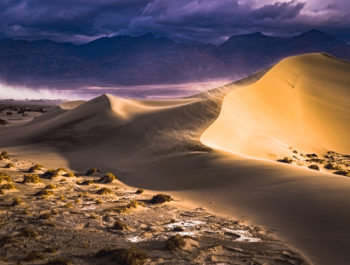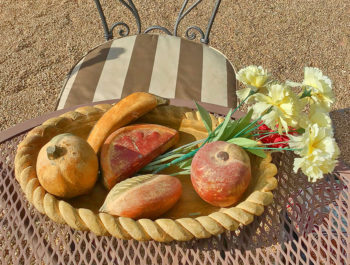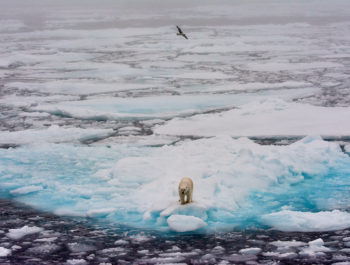Creating Artistic Photographs – Film to Digital Paradigm Shift Part 2
Introduction
A paradigm is a framework, a way of thinking and doing things. Moving from one paradigm to another is called a paradigm shift. As we saw in part 1 of this essay moving away from an old to a new paradigm is challenging because it means breaking with tradition and the accepted way of doing things.
Today a paradigm shift from film to digital is taking place in the world of photography. The film paradigm was based on a set of rules that were defined by what could be done with film. The digital paradigm is based on a different set of rules based on what can be done with digital technology.
Film photography was a rigid medium. A lot of things could not be done with film. Digital photography is a fluid medium. Just about everything that could not be done with film can be done with digital photography. The question is not ‘can we do these things with digital photography?’ The question is ‘do we want to do these things with digital photography?’ The challenge presented by the film to digital paradigm shift hinges on how each practitioner answers this question.
One paradigm is not more right than the other. The film paradigm is just as right, or as wrong, as the digital paradigm. It all depends on what your point of view is. The issue I want to address here is not whether one embraces the film or the digital paradigm. The issue I want to address is how the film paradigm continues to influence how we approach photography. The next section of this essay lists things photographers continue to do even though these things are no longer relevant or necessary.
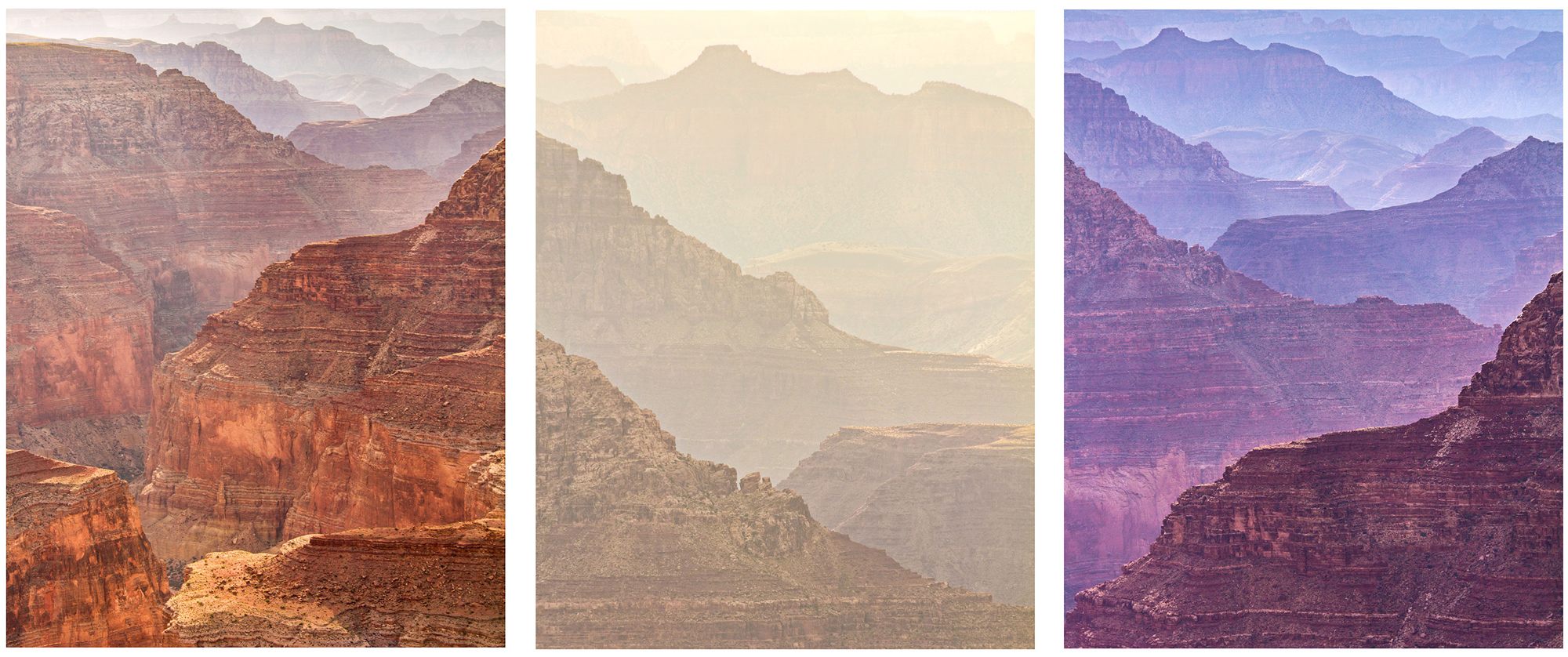
Incorrect Ideas About The Digital Paradigm
A-Believing we must capture the scene in one shot
The concept that a good photographer can get the shot in a single frame is outdated. The goal of capturing the image on a single frame comes from shooting with film. The cost of film and development was high and we could only carry so much film with us. This was particularly true with a large format such as 4×5 or 8×10.
This is no longer an issue with digital. Flashcards are inexpensive and can store huge quantities of photographs. Basically, digital images are free after your initial gear investment. This makes it possible to capture as many photographs as we want. It would be foolish not to because doing so increases our chances of success. However, the old paradigm keeps creeping in causing some photographers to wonder if taking multiple captures instead of just one is the right thing to do.
B – Not being able to make different print sizes from the same original
This comes from using slow speed film and small apertures with the camera on a tripod, a combination that created detailed, noise-free images. This was the de-facto standard for fine art landscape photography and it was particularly effective with 4×5. The original was so large and the film so fine-grained that there was no need to worry about enlargement size. Virtually any size print could be made, from small to huge. This approach was perfect for coffee table books which back then were commonplace. These books required that the image quality was sustained at full page or double page spread size.
Today coffee table books are pretty much dead and the most popular publishing platform is the web. Publishing on the web calls for a much smaller image size than book publishing. Furthermore, in film days it was the original film that was sent to the publisher, not a digital copy like we do today. Mistakes could not be corrected therefore having a high-quality film original was crucial.
Today image processing software allows us to remove noise, sharpen the image and do all sorts of ‘unspeakable things’ to maximize the appearance of images that at first may appear to be of low quality. This means that high-quality originals are no longer necessary. What matters is the quality of the final version, not the quality of the original capture.
C – Thinking gear matters
With digital capture, camera choice is a matter of personal taste rather than image quality. At small to moderate sizes, the same quality photograph can be created with a variety of cameras from cell phone to medium format. During my 2021 Joshua Tree National Park workshop, I showed participants 8×10 prints of photographs taken with four different cameras: iPod 7, Canon 80D, Fuji X100s, and Hasselblad 50D. Students could not see print quality differences nor could they identify which camera was used to capture the different photographs.
D – Thinking lots of heavy gear is necessary
Working with film required several camera bodies, multiple lenses, tripods, and more. The larger the film format the heavier the gear was. With digital capture, excellent photographs can be taken with a cell phone which is lightweight and can be carried in your pocket. If one desires to use a real camera, mirror-less cameras have made heavy and burdensome gear a thing of the past. Tripods are gone as well, unless one shoots at night because high ISO settings and wide lens openings make tripods a want instead of a need.
E – Believing we need to get everything right in the camera
The film paradigm was based on getting as many things as possible right in the camera: composition, light quality, colors, exposure, filter selection, etc. The film and the camera were in control. The image captured on film was close to the look of the final print.
The digital paradigm is based on capturing a raw file that is quite far from the final image. This capture is either underexposed or overexposed depending on the needs of each image. It is somewhat blurry due to the nature of digital capture. It is a single channel file, not a tri-channel RGB image until it is converted. Finally, the color balance is indicated but not finalized. The look of the digital capture is miles away from the look of the final image. The raw file does not give a definite idea about the look of the processed and optimized image. It also does not give a direction about what to do with the image in terms of art. Whether I can process the capture to fine art quality or whether it will put up a wall in front of my creative efforts cannot be asserted by looking at the raw file. To find that out I have to actually work on the file to unveil the beauty, or lack of, hidden in the file.
F – Thinking taking a photograph is difficult
With film getting a properly exposed photograph was challenging and seeing the results took time. We had to take the film to the lab, have it developed, and wait to get it returned back to us. Today digital cameras show us the result in real-time on the LCD screen. Histograms, automatic exposure, auto bracketing, HDR and AI make finding the proper exposure a non-issue. Because seeing the image is instantaneous we can correct mistakes on the spot. This means taking a properly exposed photograph is no longer difficult.
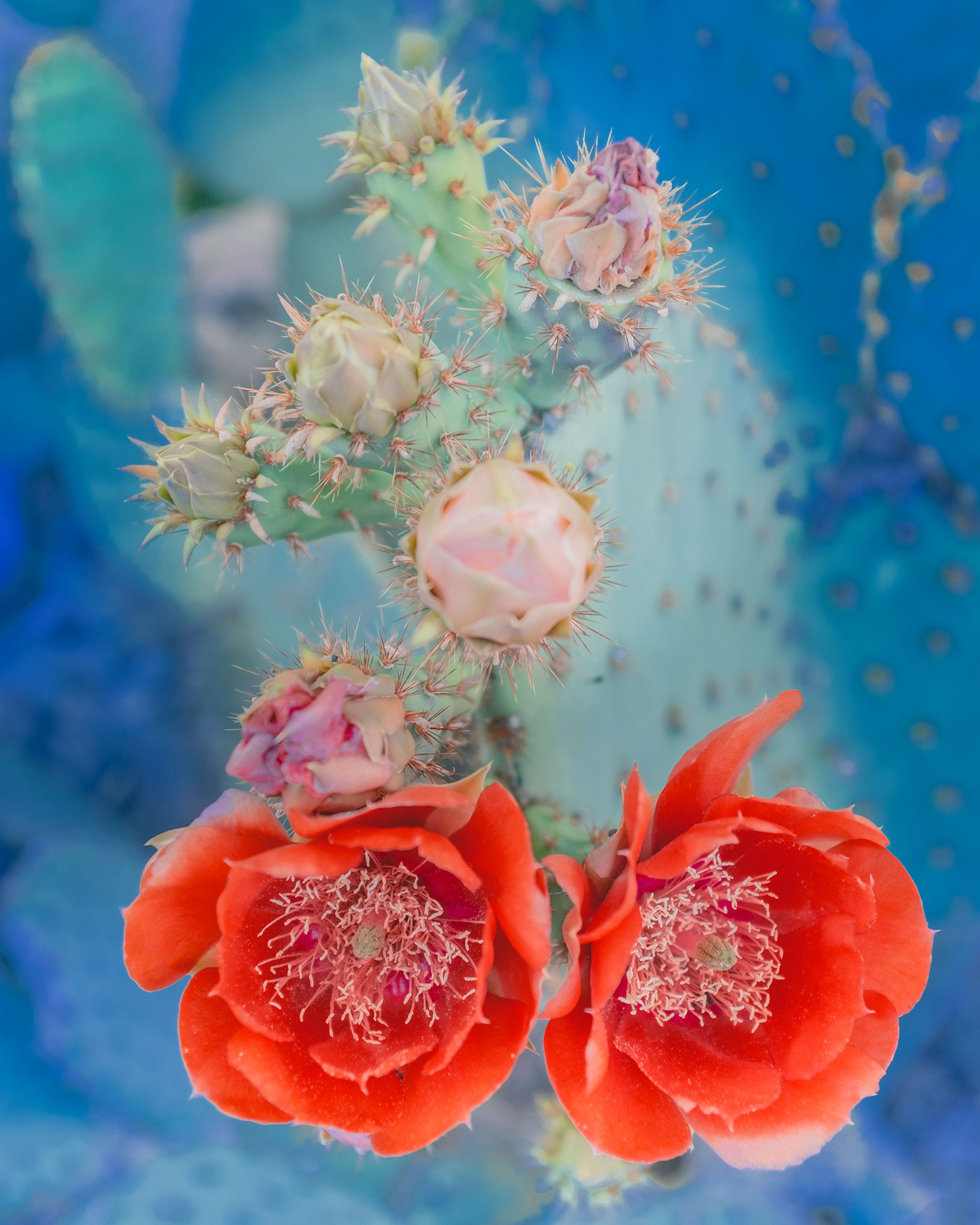
G – Thinking photography no longer needs to be learned
It may be easier to take a good photograph with digital capture than with film but this only means that the bar has been raised. The starting quality point of digital is higher than it was with film. A bad digital photograph is far better than a bad film photograph. However, creating a great digital photograph is difficult.
Exposure is only one aspect of photography. Composition, processing, and artistic creativity also have to be accounted for. Doing so requires learning, study, practice, discipline and time. Excellence comes at a cost. Mastery has to be earned. Nothing has changed here.
H – Looking for keepers instead of working on projects
When I worked with 4×5 I came home with 24 exposures after a week of photography. Now that I work with digital cameras I come home with 3000 photographs on average after the same time in the field. Finding a single keeper with 4×5 was easy. Not so with digital. The law of large numbers is at work and even after ruthless editing I still have many images that compete to be ‘the one’. This has motivated me to work on projects rather than on isolating single images. Projects were tough and time-consuming with film because the small number of photographs meant multiple trips were necessary. Projects are quick with digital because the ease with which photographs are captured means a project can be completed in a single photo trip. In fact, I came up with the mini-project concept, a series of images that can be completed in 20 minutes to an hour working on a single subject in a single location. Projects are also how I organize my photographs on my website.
I – Believing creating a personal color palette is inappropriate
With film, the colors on the original transparency or negative were the colors we could see in nature because changing the colors captured by the camera was challenging. It was only possible on a global basis resulting in an overall color cast rather than a selective color change.
With digital capture, the colors in the final image are the colors we see in our minds because we can change colors and contrast to our heart’s content. Local color changes and sophisticated color controls allow us to use the color palette of our own choosing. Film no longer controls the color in our photographs. Still, some photographers insist that the colors seen in nature must be colors in the final image.
J – Assuming there is no competition
Digital photography makes competition amongst photographers tougher than ever because photography is easier, has a low cost of access, and is accessible to all because of cell phones. As a result, photography has become the world’s number one hobby. Print prices are at an all-time low because of the competition from beginning photographers whose marketing strategy is to lower their prices until their work sells. By the time it does their profits are gone but because they seek the satisfaction of having someone buy their work rather than of making money this is not an issue for them. It is an issue to professionals who live off print sales because they see the bottom of the market drop down to even lower price points. Competition is not just at the level of print sales. It is present in every aspect of photography: publication, acceptance to art shows, access to locations, etc.
Once the province of the dedicated few photography has become a crowded field. It takes more work to stand out today. The constant sharing of knowledge and information causes things to change so rapidly that the gap between skilled and unskilled closes quickly. The outcome is that what was once considered great work is now no more than above average. This change can be hostile if you are not ready for it because when everyone is doing good work only exceptional work stands out. Doing another version of “good” is simply not enough. You have to create outstanding images to be noticed.
How Paradigms Affect Creativity
Paradigms define how our inspiration is structured. Different paradigms structure inspiration differently. Which paradigm we follow defines how our inspiration translates into specific images. While the source of inspiration may be the same the paradigm we follow will structure the image creation process in a specific way. The paradigm we follow will make us create images that conform to this paradigm, images that adhere to the rules that define this paradigm.
One of the goals I set for myself is to get rid of all aspects of the film paradigm and replace them with their digital paradigm counterparts. Visualization may be the most important of them. With film, I had to visualize the image before I could make the exposure. The medium required me to use this approach to give the image the look I was after. Digital visualization is no longer required because the capture is malleable and can be processed to fit a variety of different looks. For this reason, I have moved from pre-visualization to post-visualization. Instead of planning every processing step before making the exposure, I make an exposure that captures as much digital information as I can and figure out what the final image will look like afterward.
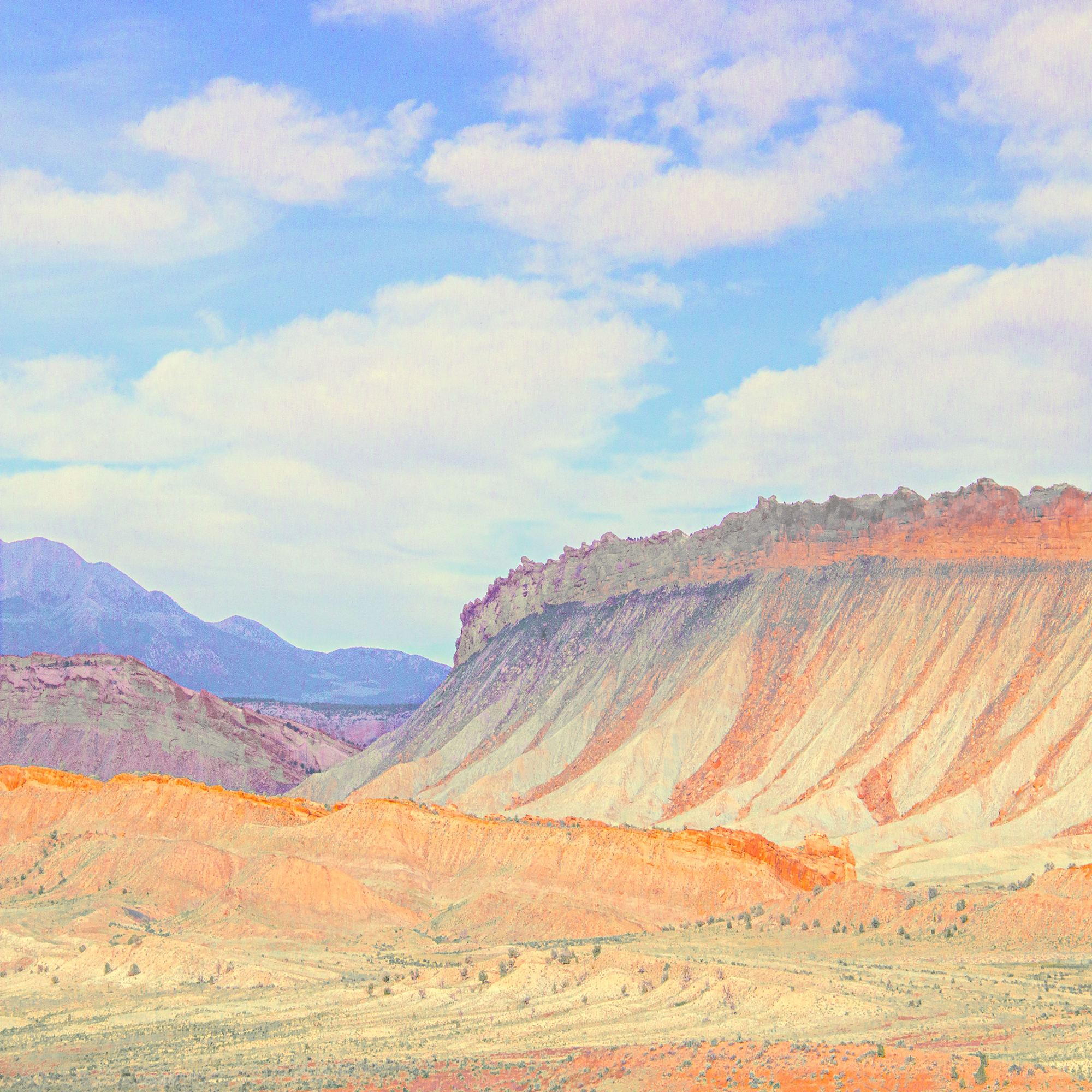
Conclusion
A paradigm is a mode of thinking, a structure that allows us to think about specific aspects of our life and that gives us a framework regarding how we approach specific fields of activity. Paradigms are present in everything we do. There is a paradigm behind this essay for example. Directly relevant to this discussion is that there are artistic paradigms.
Paradigms have a way of making us believe that the way things are now is the way they should be forever and that following the current paradigm is the best way to do things, or worse that this is the only way to do things. Paradigms can make us believe that things need to be done a specific way because this is ‘normal’. This is the case of the film and the digital paradigm. While the digital paradigm opens the doors to freedom of expression never seen before in photography, some continue to refuse to use digital photography to the full extent of its capabilities. I find this unfortunate. To think that some continue to live with unsatisfying images because they do not give themselves the right to change things beyond what could be done in the darkroom is mind-boggling to me. Limiting myself to cropping, contrast, and color control, which are the only modifications we could do in darkroom days, gives me the creeps. It would wake me up at night in a cold sweat if I had not given myself permission to embrace the digital paradigm.
To think that I could not warp the image to give it a form that the camera was unable to capture because I saw it in my mind and the camera can only record what is there in front of it would be scary. To not have the right, because of self-imposed limitations, to use warping or any of the other distort functions, is nightmarish. To not be able to reformat and transform a vertical into a horizontal or change a rectangular capture into a square or any other format would be akin to following a diet that excludes my favorite foods. To think I could not remove or add elements to create the composition I dream of would-be unbearably frustrating. To not have access to selective color, the one function I check for presence each time a new version of Photoshop is released would be like telling me I can no longer see color. Oh, what a dreadful thought. But no, I can do all of that, and moreover I have no guilt in doing so because if one asks why I do these unspeakable anti-photographic things, I answer that I am following the digital paradigm because this is how I can make my vision reality.
About Alain Briot
I create fine art photographs, teach workshops with Natalie and offer Mastery Tutorials on composition, image conversion, optimization, printing, business, and marketing. I am the author of Mastering Landscape Photography, Mastering Photographic Composition, Creativity and Personal Style, Marketing Fine Art Photography, and How Photographs are Sold. All 4 books are available in eBook format on our website at this link.
You can find more information about our workshops, photographs, writings, and tutorials as well as subscribe to our Free Monthly Newsletter on our website at this LINK. You will receive 40 free eBooks when you subscribe.

Studying fine art photography with Alain and Natalie Briot
If you enjoyed this essay you will enjoy attending a workshop with us. I lead workshops with my wife Natalie to the most photogenic locations in the US Southwest. Our workshops focus on the artistic aspects of photography. While we do teach technique, we do so for the purpose of creating artistic photographs. Our goal is to help you create photographs that you will be proud of and that will be unique to you. The locations we photograph include Navajoland, Antelope Canyon, Monument Valley, Zion, the Grand Canyon, and many others. Our workshops listing is available at this LINK.
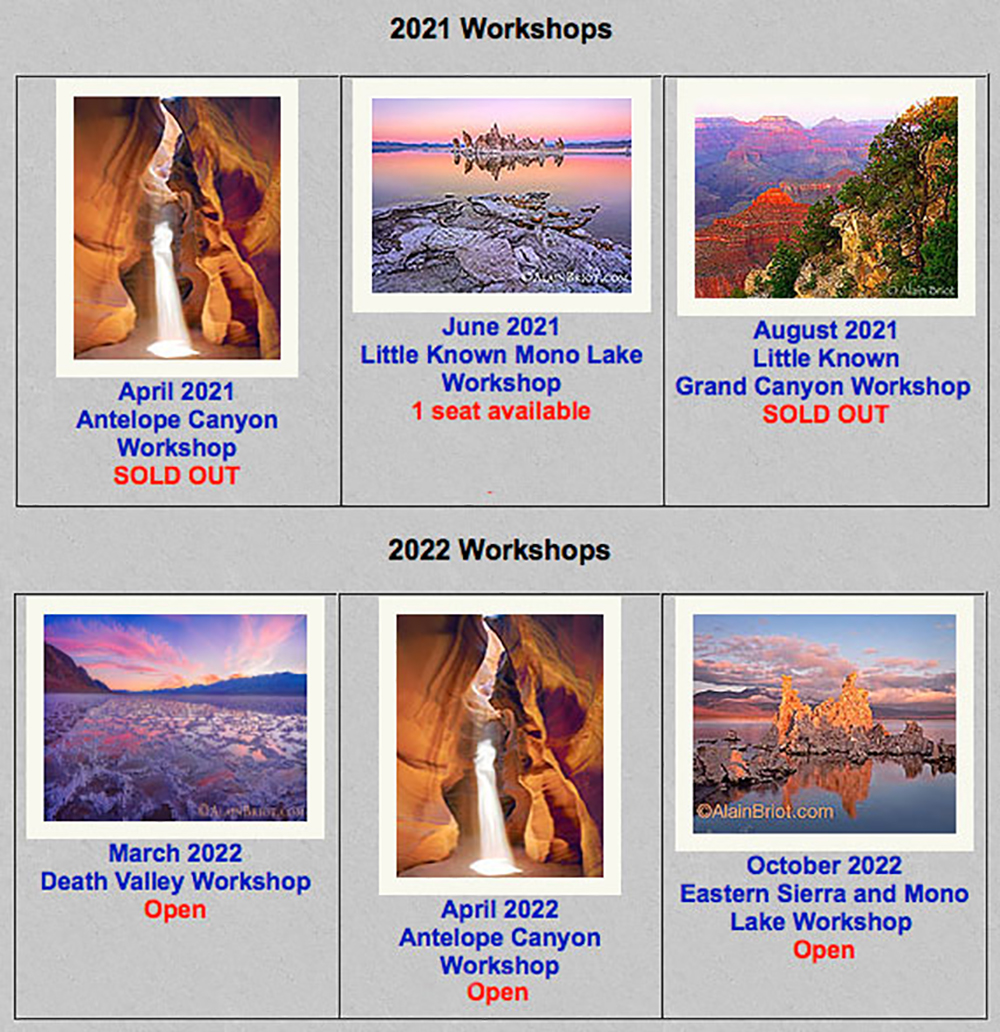
Alain Briot
May 2021
Glendale, Arizona
Author of Mastering Landscape Photography,Mastering Composition, Creativity and Personal Style, Marketing Fine Art Photography, and How Photographs are Sold. http://www.beautiful-landscape.com [email protected]






